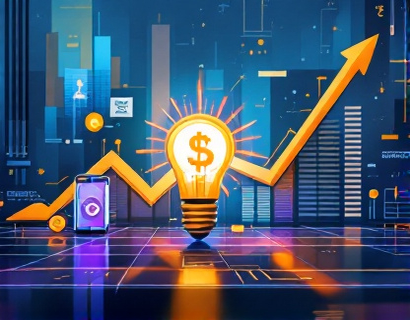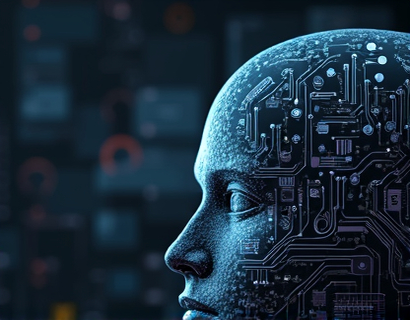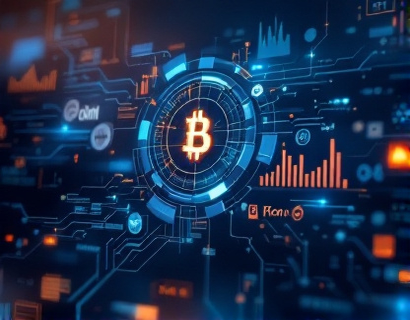Revolutionizing Digital Asset Management: A Deep Dive into Decentralized Cross-Blockchain Conversion
The landscape of blockchain technology is rapidly evolving, presenting both opportunities and challenges for professionals and enthusiasts alike. One of the most significant hurdles in the adoption and utility of digital assets is the complexity surrounding cross-blockchain conversions. Traditional methods often involve cumbersome processes, high transaction fees, and compatibility issues. However, a groundbreaking decentralized application (dApp) is changing the game by streamlining these conversions, ensuring seamless, efficient, and compatible transfers across diverse blockchains. This article delves into the intricacies of this innovative solution, designed specifically for blockchain professionals and digital asset managers seeking cutting-edge solutions.
Understanding the Need for Cross-Blockchain Conversion
The decentralized nature of blockchain technology means that different platforms operate on various protocols, each with its own set of rules and standards. This diversity is a strength, fostering innovation and competition, but it also creates fragmentation. Digital asset owners often find themselves needing to transfer assets between different blockchains, a process that can be fraught with challenges. Traditional methods of cross-blockchain conversion typically involve intermediaries, which can lead to delays, increased costs, and potential security risks. The need for a decentralized, user-friendly solution that simplifies this process is evident.
Introducing the Decentralized Solution
The proposed dApp is a pioneering platform that addresses these challenges head-on. By leveraging the power of decentralized networks, it eliminates the need for intermediaries, reducing transaction costs and enhancing security. This application is built on a robust blockchain infrastructure, ensuring transparency and immutability in all transactions. The core functionality of this dApp revolves around the seamless conversion of digital assets from one blockchain to another, without compromising on compatibility or efficiency.
Key Features of the Decentralized Conversion dApp
- Decentralized Architecture: The dApp operates on a decentralized network, removing the single point of failure and enhancing security. This architecture ensures that no single entity controls the conversion process, making it more resilient to attacks and censorship.
- Cross-Chain Compatibility: One of the standout features of this dApp is its ability to handle conversions across a wide range of blockchains, including but not limited to Ethereum, Binance Smart Chain, Polkadot, and Solana. This broad compatibility ensures that users can manage their assets across different ecosystems without the hassle of multiple platforms.
- User-Friendly Interface: Despite its complex underlying technology, the dApp boasts an intuitive and user-friendly interface. This design ensures that both novice users and seasoned blockchain professionals can navigate the platform with ease, making it accessible to a wide audience.
- Real-Time Conversion Rates: The dApp provides real-time conversion rates, ensuring that users always get the best possible exchange rate. This feature is particularly beneficial in volatile markets where rates can fluctuate rapidly.
- Smart Contract Integration: The platform leverages smart contracts to automate the conversion process. This not only speeds up transactions but also reduces the risk of human error, ensuring a smooth and reliable experience.
How the Decentralized Conversion Process Works
The conversion process on this dApp is designed to be straightforward and efficient. Here’s a step-by-step breakdown of how it operates:
1. Asset Selection: Users begin by selecting the digital assets they wish to convert. The dApp supports a wide range of assets, from popular cryptocurrencies to lesser-known tokens.
2. Source Blockchain Selection: Users choose the blockchain from which the assets will be converted. The dApp automatically retrieves the current balance and conversion rates for the selected assets.
3. Destination Blockchain Selection: Next, users select the target blockchain where they want the converted assets to be transferred. The platform ensures that the destination blockchain is compatible with the converted assets.
4. Conversion Initiation: Once the selections are made, users initiate the conversion process. The dApp uses smart contracts to execute the conversion, ensuring that the transaction is recorded on the blockchain in real-time.
5. Confirmation and Completion: After the conversion is complete, users receive a confirmation notification. They can then access their converted assets on the target blockchain through their respective wallet interfaces.
This streamlined process not only saves time but also enhances the overall user experience, making cross-blockchain conversions more accessible and reliable.
Benefits for Blockchain Professionals and Digital Asset Managers
The introduction of this decentralized conversion dApp brings numerous benefits to blockchain professionals and digital asset managers:
- Increased Efficiency: The automated conversion process reduces the time and effort required to manage cross-blockchain asset transfers, allowing professionals to focus on more strategic tasks.
- Cost Savings: By eliminating intermediaries, the dApp significantly reduces transaction fees, making it a cost-effective solution for asset management.
- Enhanced Security: The decentralized and smart contract-based approach minimizes the risk of fraud and hacking, providing a secure environment for asset transfers.
- Greater Flexibility: Users can easily manage assets across multiple blockchains, adapting to the evolving blockchain landscape with minimal effort.
- Improved User Experience: The user-friendly interface and real-time data make the platform accessible to a broad range of users, from tech-savvy professionals to those new to blockchain technology.
Case Studies and Real-World Applications
To better understand the practical implications of this decentralized conversion dApp, let’s explore a few real-world scenarios:
1. Cross-Chain Trading Platforms: Trading platforms that operate across multiple blockchains can integrate this dApp to facilitate seamless asset transfers between different chains. This integration enhances the liquidity and usability of their platforms, attracting more users and increasing transaction volumes.
2. DeFi Protocols: Decentralized finance (DeFi) protocols can leverage this dApp to enable users to move assets between different DeFi platforms without the hassle of multiple conversions. This interoperability is crucial for the growth and adoption of DeFi solutions.
3. Asset Management Firms: Firms managing digital asset portfolios can use this dApp to efficiently rebalance their clients' portfolios across various blockchains, optimizing performance and reducing operational costs.
These applications demonstrate the versatility and practical value of the decentralized conversion dApp, making it an essential tool for the modern blockchain ecosystem.
Future Developments and Potential Enhancements
As the blockchain landscape continues to evolve, the decentralized conversion dApp is poised for further enhancements and expansions:
- Multi-Asset Support: Future updates may include support for a broader range of assets, including non-fungible tokens (NFTs) and other complex digital assets.
- Enhanced Analytics: The dApp could integrate advanced analytics tools to provide users with insights into their asset performance and market trends.
- Community Governance: Implementing a community governance model could allow users to have a say in the development and direction of the platform, fostering a more inclusive and user-driven ecosystem.
These enhancements will continue to solidify the dApp’s position as a leading solution in the realm of cross-blockchain asset management.
Conclusion
The decentralized conversion dApp represents a significant leap forward in the management and transfer of digital assets across different blockchains. By addressing the key challenges of interoperability, security, and efficiency, this platform empowers blockchain professionals and digital asset managers to navigate the complex landscape with greater ease and confidence. As the blockchain ecosystem continues to grow, solutions like this dApp will play a crucial role in fostering innovation and adoption, paving the way for a more interconnected and efficient digital future.











































